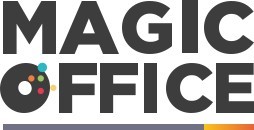Understanding the Goods Receipt Process
Comprehending the Initial Stages of Goods Processing
In New Zealand's business landscape, the receipt of goods is a fundamental part of the supply chain. At its core, this process involves a meticulous assessment of goods received from suppliers, ensuring they match the purchase order and the documented invoice. Recognizing the nuances of this procedure is crucial for office managers striving for an efficient and error-free workflow. The receipt process is initiated once an order is placed, typically documented through a purchase order. Upon arrival, goods are verified against this order, with an eye towards confirming item quantities, quality, and any visible damage. Discrepancies noted at this stage are essential for documenting issues, thereby beginning a resolution process that may involve the supplier and accounts payable departments. This step is crucial for maintaining a well-functioning inventory management system and ensuring that the goods received align with the company's procurement standards. Supporting documents like delivery notes and goods receipts are vital. These records ensure that data management remains consistent and reliable, facilitating smooth communication across departments such as warehouse, inventory management, and finance. Evolving technologies, such as SAP goods receipt modules, have modernized these processes, allowing for more seamless integration of data and real-time updates across the business. As technology continues to advance, its role in optimizing the receipt process cannot be undervalued, underscoring the need for continuous learning and adaptation in these dynamic times. For companies aiming for optimization, integrating best practices into their receipt goods procedures can significantly reduce errors and enhance overall efficiency. Ensuring that these processes are clear and well-managed is essential for maintaining a streamlined supply chain and supports broader business objectives. Learn more about maximizing efficiency in the workplace with a flexible desk arrangement.Challenges Faced by New Zealand Companies
Common Obstacles in New Zealand's Goods Receipt Process
New Zealand companies often encounter various challenges when managing the goods receipt process within their supply chains. These hurdles, if not addressed, can lead to inefficiencies and increased costs, impacting the overall business performance.- Supplier Communication Issues: Ensuring effective communication and coordination with suppliers is crucial. Miscommunications can lead to discrepancies in delivery schedules, causing delayed or incorrect shipments.
- Inaccurate Data and Documentation: Proper documentation is vital for accurate receipt of goods. Errors in purchase orders, invoices, and other documents often lead to mismatches between expected and actual goods received, complicating inventory management.
- Warehouse Management Challenges: Efficient warehouse operations are essential for smooth goods processing. Poorly organized warehouses can result in misplacement or loss of items, complicating the tracking of inventory.
- Technological Limitations: Many businesses struggle due to outdated or inefficient systems, like SAP goods and inventory platforms, that don't integrate well with other aspects of the supply chain management.
- Labor and Staffing Issues: Insufficient training or workforce shortages can slow down the goods receipt process. Competent management and staffing are needed to handle the physical and administrative aspects efficiently.
Strategies for Streamlining Goods Receipt
Effective Practices for Smoothing the Flow of Goods
To streamline the goods receipt process, New Zealand companies must adopt a set of effective practices that enhance efficiency and accuracy. A well-organized receipt process not only ensures seamless operations but also supports overall inventory management. Here are some strategies that businesses can employ:- Automation of Documentation: Automating the documentation related to purchase orders, invoices, and receipts can significantly reduce errors and accelerate the entire process. Utilizing systems like SAP, businesses can integrate purchase order confirmations directly with goods receipt and invoice verification functions.
- Inventory Management Optimization: Efficient inventory management is crucial. By keeping accurate records of received goods and matching them against purchase orders, companies can avoid discrepancies. Implementing robust inventory management systems aids in maintaining accurate data for stock levels, facilitating prompt reordering when necessary.
- Close Collaboration with Suppliers: Building strong relationships with suppliers can lead to improved coordination. Clear communication can ensure timely deliveries and resolve any discrepancies promptly before they escalate into larger issues.
- Warehouse Organization: Proper warehouse management is integral to the receipt process. Goods should be organized systematically for easy retrieval and documentation. Employing efficient warehousing practices helps in quick scanning of goods receipts and ensures proper allocation of received items.
- Accounts Payable Coordination: By closely aligning with accounts payable departments, businesses can ensure timely processing of receipt invoices. This coordination avoids payment delays and helps in maintaining trust with suppliers.
The Role of Technology in Goods Receipt
Embracing Technology for a Seamless Goods Receipt
The implementation of cutting-edge technology plays a pivotal role in optimizing the goods receipt process. With businesses in New Zealand facing complex supply chain challenges, turning to advanced technological solutions can substantially streamline the flow of goods, ensuring that companies stay competitive in a digitized market.
Integrating systems like SAP, businesses can efficiently manage the entire process—from purchase order to receipt, and finally, invoice management. The precision and insight provided by such a system allow office managers to effectively track inventory levels, reducing the likelihood of discrepancies between received goods and purchase orders. Furthermore, the automatic creation of goods receipt documents upon delivery ensures accuracy and saves valuable time previously spent on manual data entry.
Automated notifications can alert managers when goods are delayed or when a delivery falls short of the order quantities, providing a heads-up before issues become problematic. These features allow for proactive management, suggesting remedial actions well before impacting production schedules or warehouse operations.
The management of goods services is fundamentally enhanced by leveraging digital technologies, allowing for a seamless transition from physical receipt of items to their recording in the accounting system for prompt accounts payable processing. This serves not only to enhance the efficiency of receipt invoice handling but also supports strategic decision-making through access to real-time data analytics. Consequently, inventory management systems tightly coupled with supplier documentation offer significant long-term benefits, propelling businesses toward sustainable practices.
While SAP goods solutions and other technological advancements drive improvements, the true optimization comes when these tools are part of a comprehensive approach—including training staff to grasp the nuances of digital systems, as discussed further in our exploration of training practices for office managers in New Zealand.
Training and Development for Office Managers
Empowering Office Managers: Training and Development
Effective management of the goods receipt process is vital for office managers to ensure smooth operations within New Zealand companies. Equipping office management with the right skills and knowledge can significantly improve efficiency and accuracy in handling goods receipts. Understanding the nuances of the receipt process ensures that office managers can address potential challenges head-on. As office managers hold a pivotal role in inventory management and liaising with suppliers, the importance of comprehensive training cannot be overstated.- Comprehensive Training Programs: These should cover aspects from the basics of inventory management, the essential steps involved in processing purchase orders, to more complex topics such as SAP goods receipt and accounts payable integration. By understanding these areas, office managers are better prepared to handle discrepancies in delivery documents or invoices.
- Hands-On Experience: Offering practical workshops where office managers can engage with real-world scenarios in a controlled environment is invaluable. This experience aids in grasping the intricate process of order receipts and payment verification.
- Technology Proficiency: Familiarity with technologies that aid goods receipt management is crucial. Training should include software tools that streamline goods receipt and inventory management, allowing for more efficient data handling and reporting.
- Regular Updates: As business dynamics and supplier relationships evolve, continuous learning and staying updated on best practices can help maintain professionalism and efficacy in the receipt process.
Case Studies from New Zealand Companies
Real-World Applications from Local Businesses
In understanding how New Zealand companies are optimizing their goods receipt processes, examining real-world examples provides practical insights. These case studies illuminate innovative approaches that companies have employed to address common challenges and enhance their operations.
New Zealand's diverse business landscape, ranging from small-scale producers to large enterprises, demonstrates varying levels of sophistication and approaches in dealing with goods receipt processes. One notable trend among these companies is integrating comprehensive software solutions like SAP to streamline operations. This integration allows for seamless data handling, ensuring alignment between purchase orders and invoices, minimizing errors, and expediting the goods receipt process.
For instance, some businesses have enhanced their inventory management by adopting these integrated systems, significantly reducing the time taken for checking, verifying, and recording goods received. This has led to improved accuracy and timing, thereby positively impacting their overall supply chain efficiency.
Another approach noted among top-tier New Zealand companies involves leveraging automated systems for document processing. By minimizing manual entries and adopting digital solutions, businesses have managed to cut down administrative burdens and speedy processes related to goods and receipts. As a result, companies experience fewer delays in warehouse management and increased accuracy in aligning goods received with purchase orders.
Furthermore, businesses are continuously investing in employee training and development to maximize these technological tools' effectiveness. Empowering office managers and staff with the right skills ensures that the workforce is not only adept with the technological aspects but can critically assess process areas for ongoing improvement.
The success of these companies serves as a blueprint for others seeking to refine their goods receipt and inventory management processes. Through strategic implementation of technology and continuous learning, New Zealand businesses are better equipped to handle the evolving demands of supply chain management.










